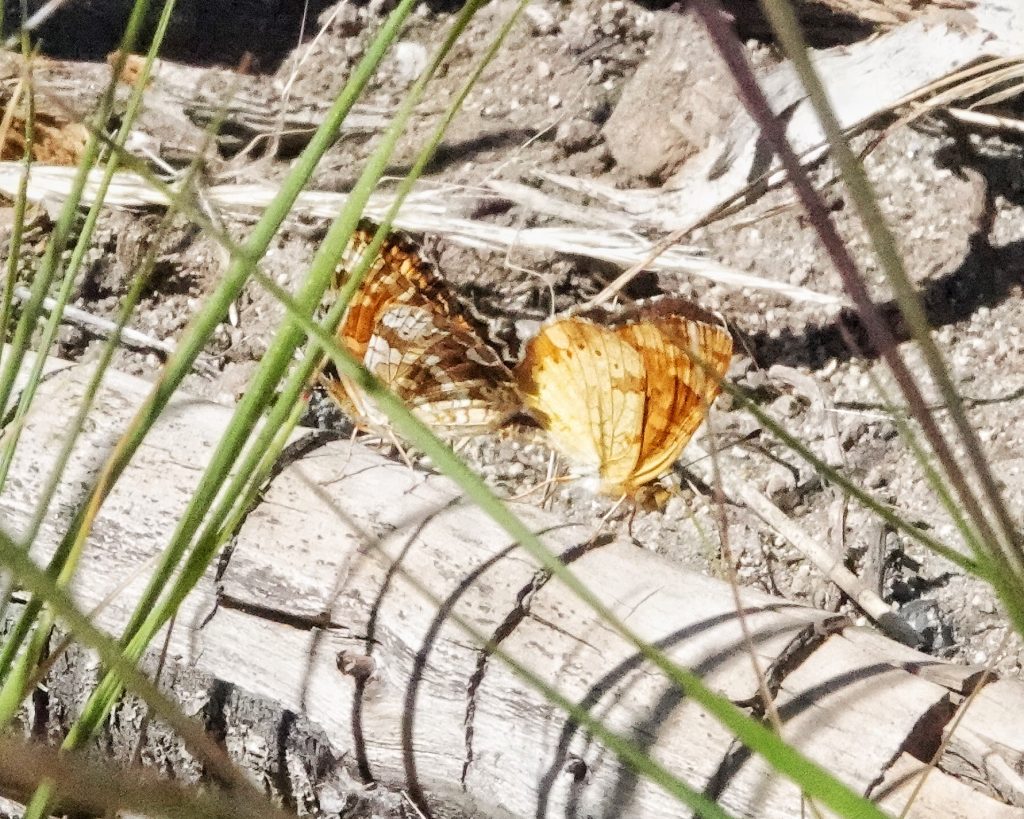
As I mentioned in ‘A Trip to Mt. Adams’ this was a common species of butterfly in the Cascade Creek burn. They are always a delight to see, and the broad band of orange on the dorsal hindwing really pops next to the black, which is helpful in spotting them, because they are not very large, and they are quite fast, as well as being rather spooky. I took over a hundred photos of field crescents during that trip to Mt. Adams, and the vast majority of those had to be cropped so heavily that they were pixilated, blurry, and worthless.
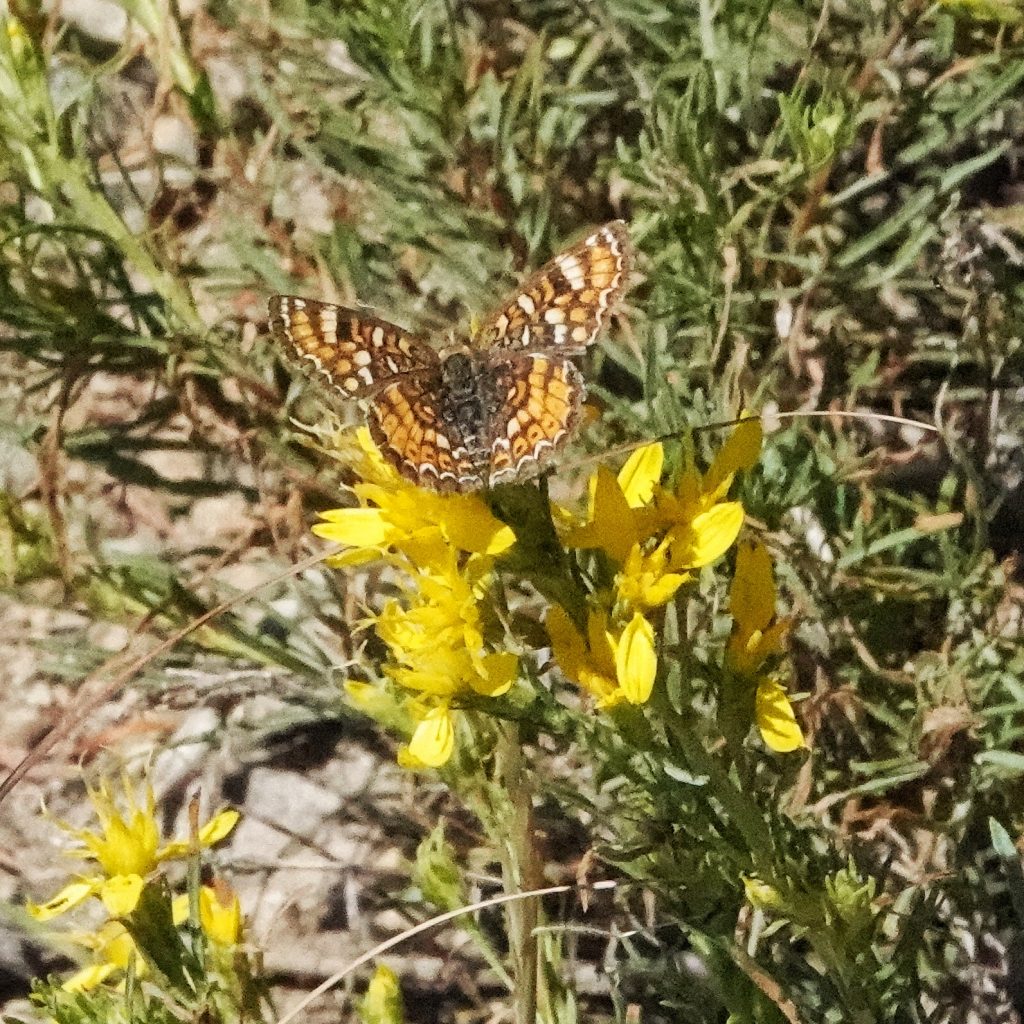
Description– “Wing Span: 1 – 1 3/4 inches (2.5 – 4.5 cm)…Upperside is orange and black. Underside of forewing is yellow-brown with a yellow bar at the cell and small black patches on the inner margin. Underside of hindwing is yellow-brown with rusty markings.” Field Crescent Phyciodes pulchella (Boisduval, 1852) | Butterflies and Moths of North America;
Similar species– “Best told by the upper surface being relatively black in the basal and median regions of the wings, the underside of forewing with a yellow bar at the outer end of the discal cell running perpendicular to leading edge of wing, antennal knobs largely dark brown or black.” Field Crescent – Montana Field Guide
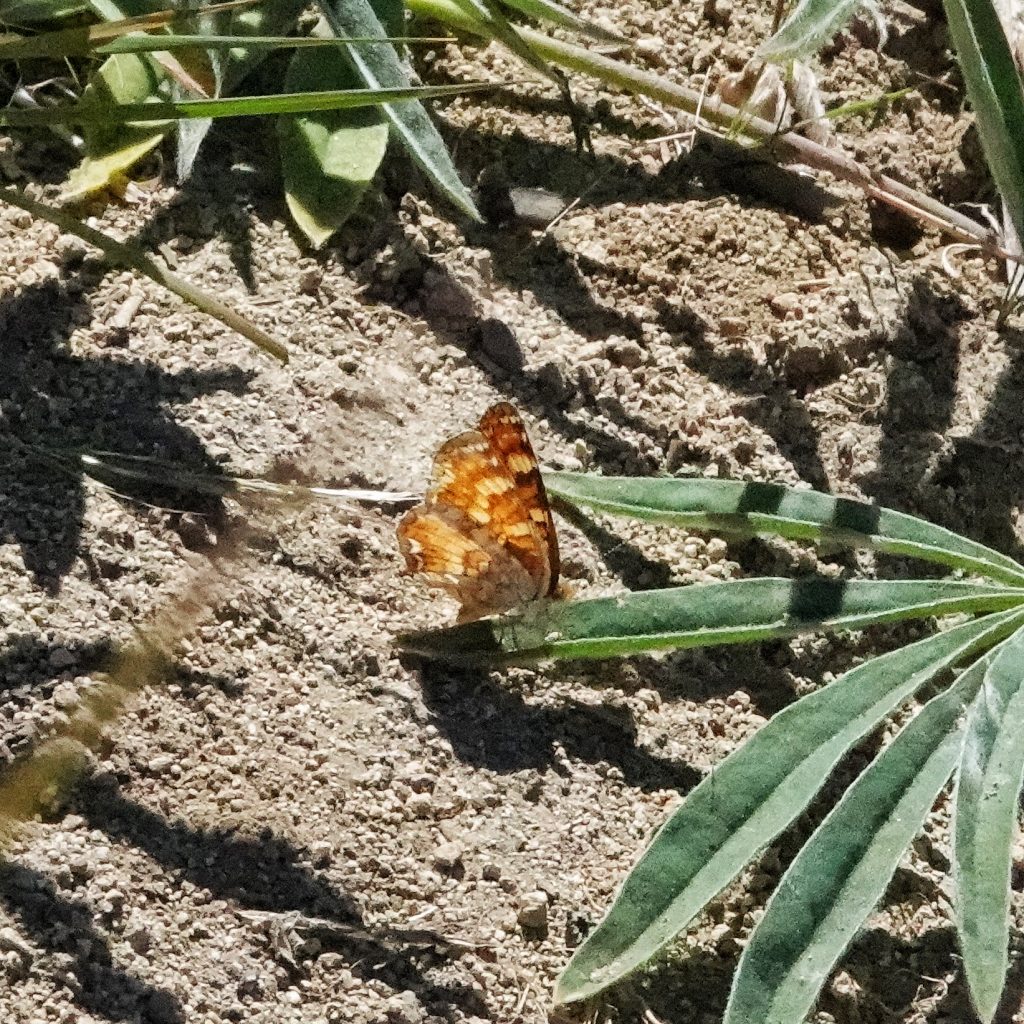
Habitat– Prairie, forested foothills, moist montane meadows, taiga, above treeline in alpine tundra (Scott 1986; Pyle 2002; James and Nunnallee 2011).” Field Crescent – Montana Field Guide
Range-“From central Alaska and northern Yukon Territory south to southern California, southern Arizona, and southern New Mexico, east to the western edge of the Great Plains (Scott 1986; Glassberg 2001; Pyle 2002); to at least 3355 m elevation in Colorado (Brown 1957).” Field Crescent – Montana Field Guide; they are found in montane environments throughout the PNW, except absent from the Coast Range, rare in the western Cascades, and very localized in the Willamette Valley.
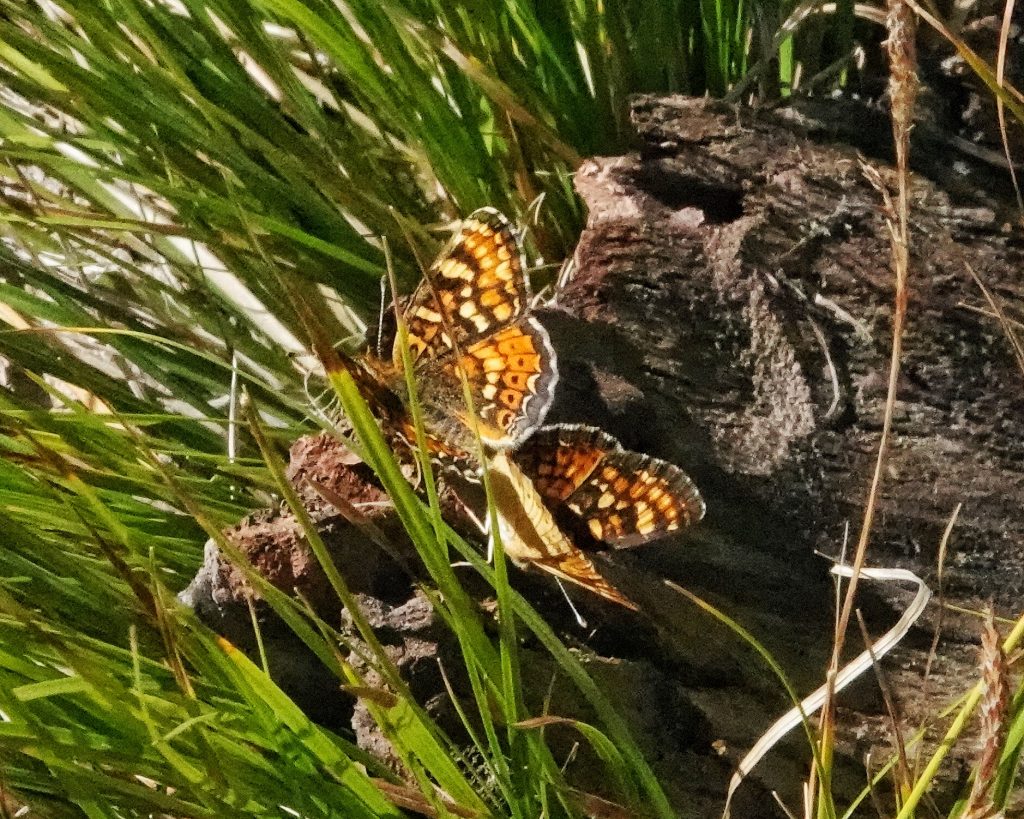
Eats– “Larval food plants include many species of aster (Aster, Eucephalius, Eurybia, Machaeranthera)(Scott 1986, 1992; Guppy and Shepard 2001; Pyle 2002), but also on Taraxacumin captivity (James and Nunnallee 2011). Adults feed on flower nectar (including Achillea, Allium, Antennaria, Apocynum, Arnica, Aster, Astragalus, Bidens, Ceanothus, Centaurea, Cerastium, Chrysothamnus, Cirsium, Cryptantha, Erigeron, Erioganum, Erysimum, Galium, Grindelia, Helianthus, Lesquerella, Machaeranthera, Potentilla, Prunus, Ranunculus, Rudbeckia, Sedum, Senecio, Solidago, Taraxacum, and Trifolium) as well as dung and mud (Scott 1992; Pyle 2002, James and Nunnallee 2011).” Field Crescent – Montana Field Guide
Eaten by– Presumably a host for parasitoids in Hymenoptera and Diptera, and probably preyed upon by insectivores of all classes, but I can find nothing specific for this species.
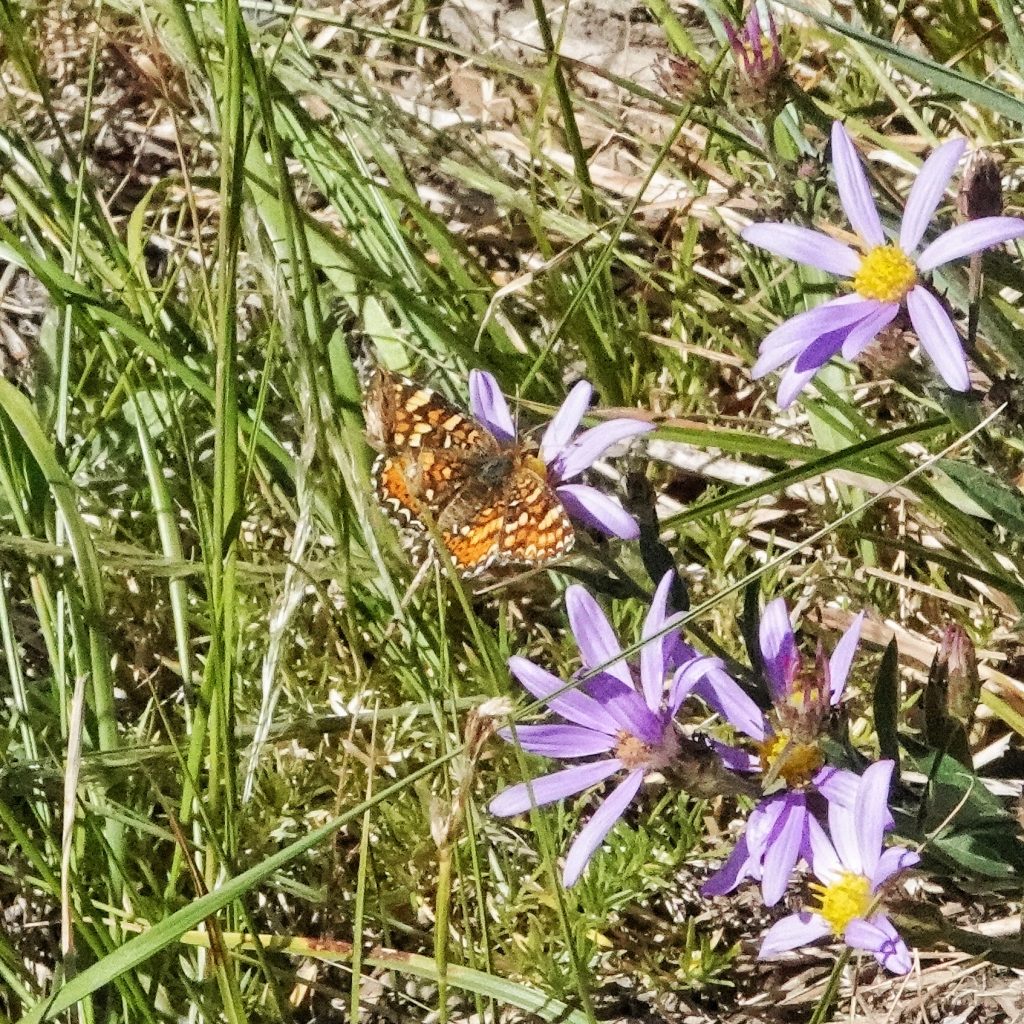
Life cycle– “females lay eggs in clusters (to 235 eggs per cluster but usually 30-40 eggs) on the undersides of host plant leaves, sometimes very close to the ground. Eggs hatch in 6-9 days. Larvae gather into groups and cover themselves in communal silk nests. Feeding occurs both diurnally and nocturnally. Larvae reach L3 instars by about 36-40 days post egg hatch, at which stage they diapause. Development to L4 instar began about 26 days after overwintwering completed, L5 in another 11 days, and pupation in 20 days after molting to L5; adults emerge from pupae (eclose) in abut 33-40 days, depending on temperature (Scott 1992; James and Nunnallee 2011). Males patrol for females low to the ground throughout the day in grassy swales, meadows, valley bottoms (Scott 1975b, 1986).” Field Crescent – Montana Field Guide
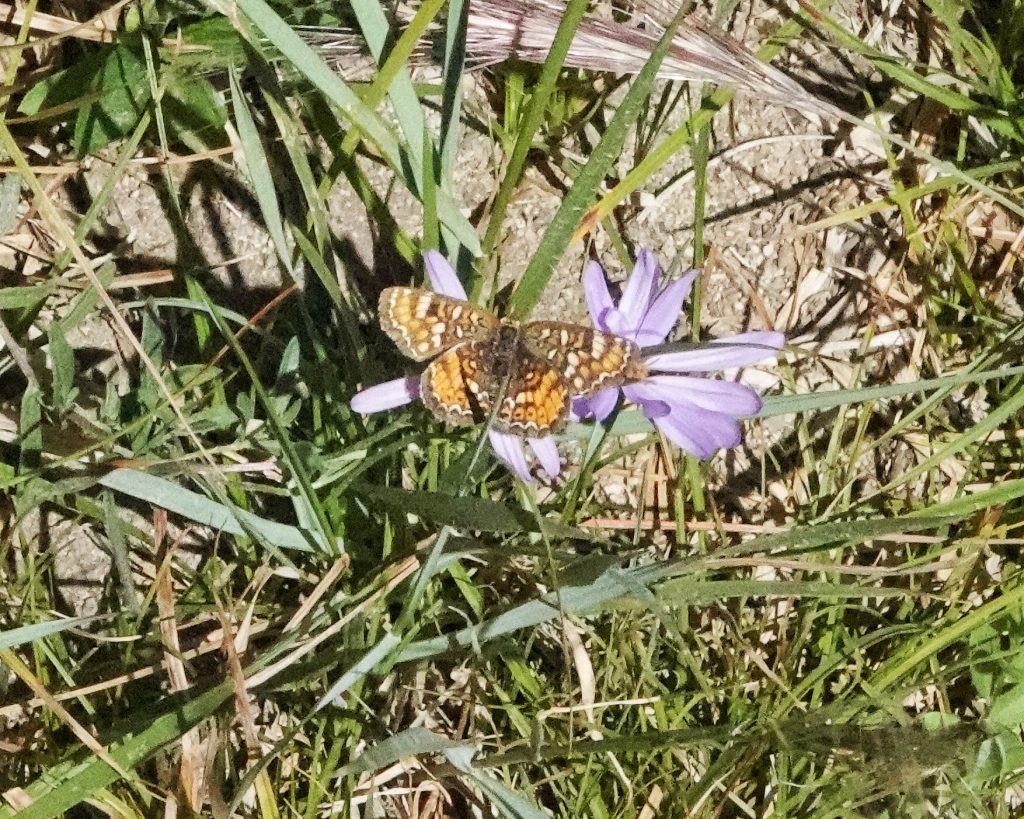
Adults active– May through September, peak in June-July
Etymology of names– Phyciodes may come from the Greek word for ‘painted/covered with cosmetics’, in which case it probably refers to the complex pattern on the ventral side of the wings. The specific epithet pulchella is from the Latin word for beautiful, and no one could argue with the validity of that epithet.
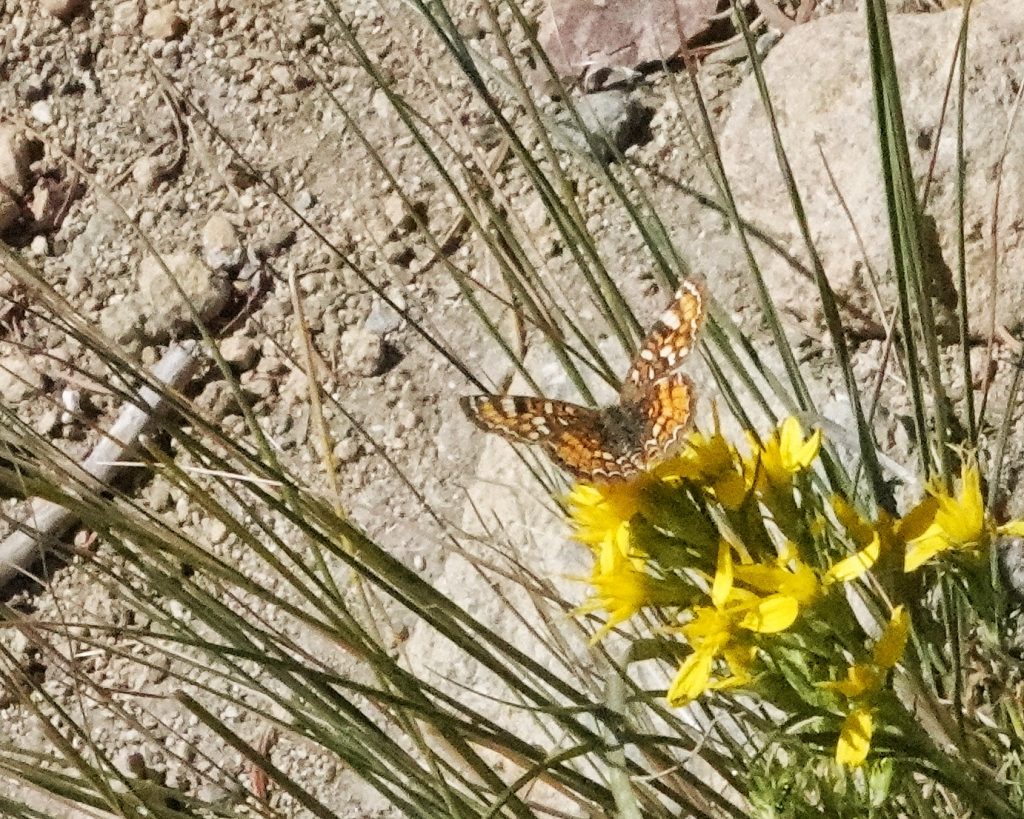
Field Crescent Phyciodes pulchella (Boisduval, 1852) | Butterflies and Moths of North America
Field Crescent – Montana Field Guide
Species Phyciodes pulchella – Field Crescent – Hodges#4482.1 – BugGuide.Net
Moth Photographers Group – Phyciodes pulchella – 4482.1
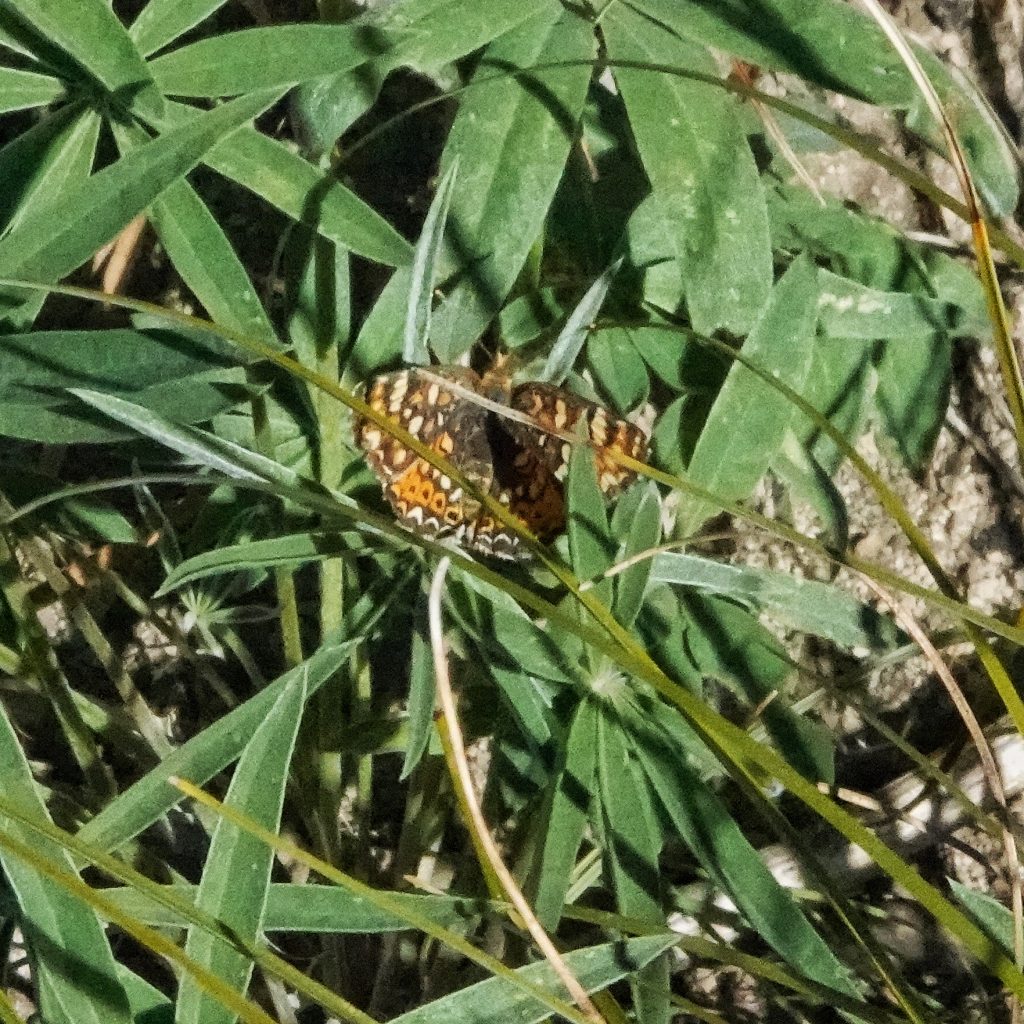
1 thought on “Phyciodes pulchella (Field Crescent)”